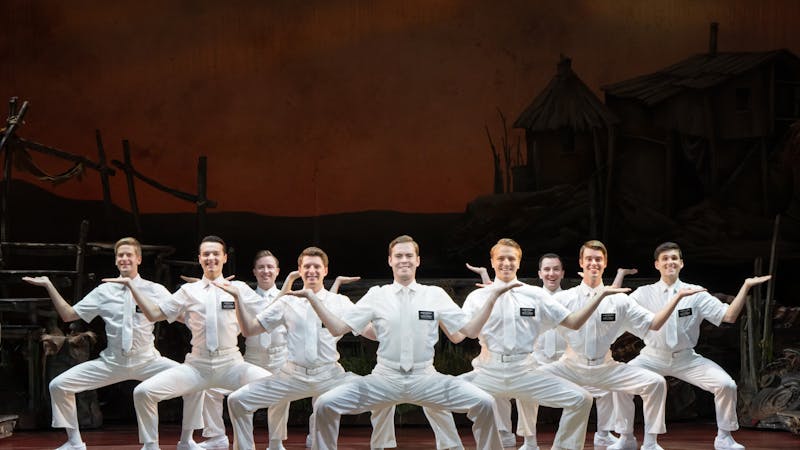Caffeine Culture: How Rice Consumes caffeine today
Caffeine is as much a staple of college life as free T-shirts and ramen noodles. Recently, newcomers like energy drinks and caffeinated alcohol have joined the caffeine offering and created quite a buzz. However, at least here at Rice, they have yet to overturn the popularity of traditional drinks like tea, soda and – above all – coffee.
In a survey administered to Rice undergraduates, 38 percent of respondents said they preferred coffee over all other sources of caffeine. Furthermore, though most people said they only drank between zero and two cups of coffee a week, around seven percent said their weekly coffee consumption was over 12 cups, the largest percentage when compared to other sources of caffeine.
Part of coffee's on-campus dominance is due to its sheer prevalence on campus. From Coffeehouse and RechargeU to Salento's and all the serveries, the Rice community has a multitude of outlets around campus for satisfying coffee cravings.
One of the main coffee places on campus, Rice Coffeehouse, underwent a major expansion over the summer to service the needs of a growing university population better. However, it wasn't just their kitchen that grew: the student-run business now boasts a larger menu that includes variety of new, quirkily-christened drinks like the Smuthy, Milky Way, and a recent favorite, the Frappy.
Coffeehouse General Manager Christine Cooper said Coffeehouse decided to create the Frappy after observing the popularity of the Starbucks Frappachino and hearing demand for it from people who wouldn't otherwise consume coffee.
"Starbucks came up with all these consumer-friendly drinks, and they're not real coffee, but that's just what people drink and expect now," Cooper explained.
To Cooper, the sudden demand for these sweet pseudo-coffees stems from the pressure of Rice's academic and extracurricular activities. For the sleep-deprived, coffee presents the healthiest way to stay awake, so even those who dislike the drink will seek out the most appealing way to consume it. Thus, the Frappachino family was born, and students awake for physics and Facebook alike molded that phenomenon into the sweet-drink fad it is today.
Frappys are only part of what Cooper calls the recent "Starbucks culture," which involves grabbing a coffee simply to chat with friends in the classic coffeehouse atmosphere.
Another trend Cooper noticed is a greater demand for customization and modified orders.
"I think a lot of people just want the opportunity to make things their own," she observed
For Coffeehouse's direct on-campus competitor, Salento's, the majority of their customers drink espressos and regular coffee drinks. Their general manager, Nicholas Velazquez, said the coffee drinkers would come in droves during certain periods of the day, like 9 a.m., lunch time, and 8 p.m. for a quick boost.
However, many students find that boost through alternate forms of caffeine. On the survey, tea was a popular second to coffee in terms of preference and consumption, while soda led tea in terms of consumption. Only 7.5 percent of respondents marked energy drinks as their preferred source of caffeine, a surprising statistic given the variety of energy drinks available around campus through outlets like the Hoot and Red Bull girls.
No discussion of recent caffeine trends would be complete without mentioning caffeinated alcohol and its most notorious representative, Four Loko. Though the caffeine has since been removed from this alcoholic drink, the beverage gained cult status for the effects it had during its four-year run on the market. Furthermore, its demise has not hindered students from mixing drinks together to form caffeine-alcohol cocktails, perhaps in the hopes of Red Bull actually giving them wings. However, caffeinated alcohol still came in as the least preferred and consumed category of caffeine, with only 5 percent of respondents drinking it.
In addition to these primary sources, some students also draw caffeine from gum, pills and even chocolate, while others refrain from caffeine altogether for health or other reasons.
As for the motivation behind caffeine consumption, the majority of survey respondents said caffeine was useful for both studying and staying awake in class. However, some simply drank caffeinated beverages either socially or for their taste. In that way, perhaps caffeine and alcohol are not so different.
While walking to the RMC last summer, I noticed a squirrel holding not a nut, but a Starbucks Frappachino cup in its mouth, making the point in true Rice fashion that caffeine has a significant presence here, regardless of how or why it's consumed.
More from The Rice Thresher
Review: “Balloonerism” is a graceful tribute to Mac Miller’s legacy
Mac Miller’s “Balloonerism” is a delicate balancing act — a posthumous release that feels deeply personal yet walks the fine line between honoring an artist's legacy and commodifying it. Unlike other releases from late artists, which can feel like haphazard collections of half-finished demos (The Party Never Ends by Juice WRLD comes to mind), “Balloonerism” is a cohesive, almost ethereal work.

Review: “The Book of Mormon” involves no reading
“The Book of Mormon”, a flashy musical that is not at all biblically accurate, came to the Houston Hobby Center January 7-12. The musical makes a mockery of the typical mission work expected from Mormons, covering everything from their racism, attempts at forced conversion and inner-religious conflicts, all while tap-dancing and singing away.

Review: “Look Back” is short but powerful
“Look Back” is one of the best films of 2024. Inspired by the tragic 2019 Kyoto Animation arson attack, Tatsuki Fujimoto, the creator of “Chainsaw Man,” crafts a deeply moving tribute that transforms real-life sorrow into a story of resilience and connection.


Please note All comments are eligible for publication by The Rice Thresher.